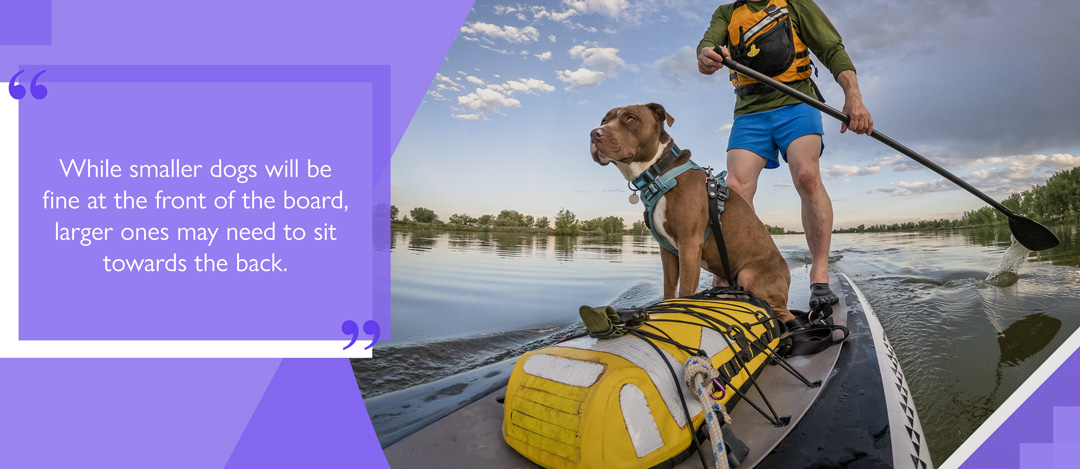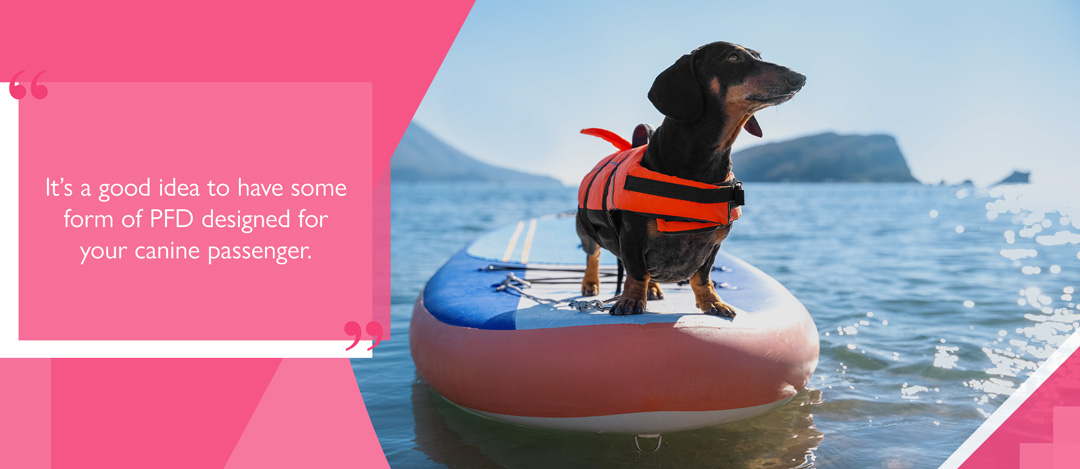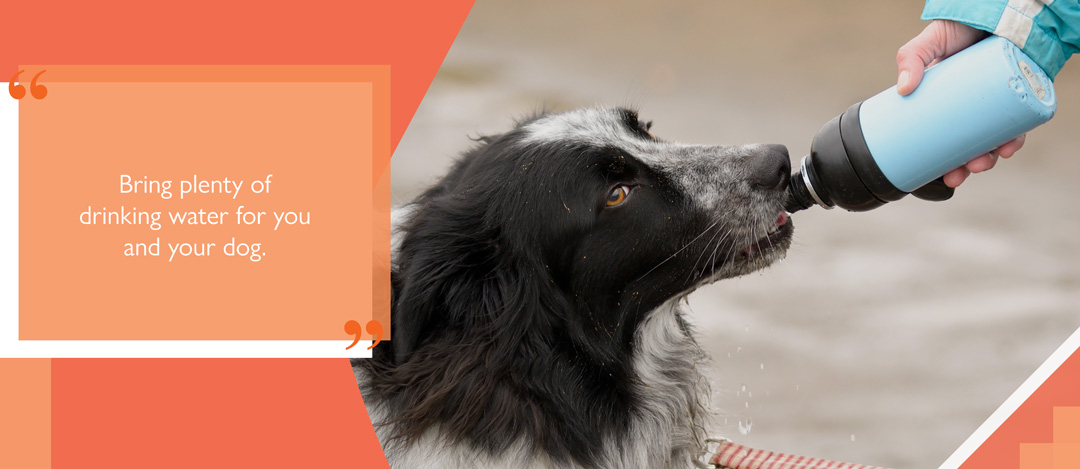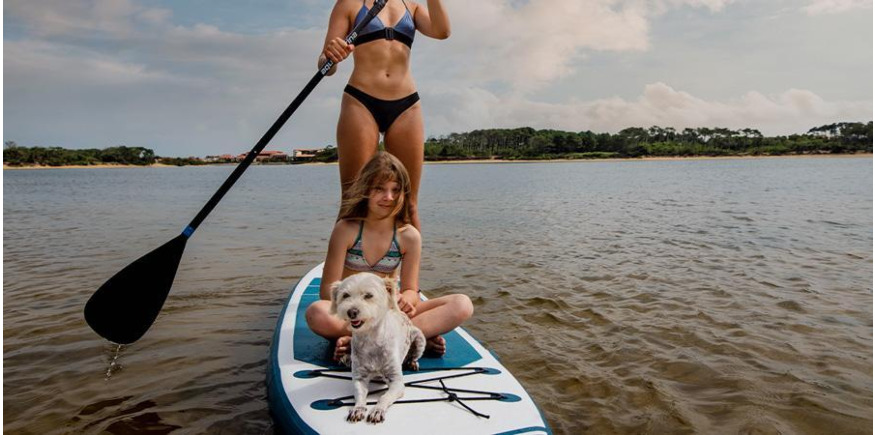Provided you are a competent and comfortable paddleboarder, getting out on the water with a dog can be a fun time for both pet and owner.
A paddle board big enough for two
The correct size paddle board is necessary to ensure comfort, safety, and efficiency. Your SUP should be stable, buoyant and able to handle the combined weight of you, your dog, and your gear.
Buoyancy is directly related to board volume. Broadly speaking, thicker boards will fare better when considering the addition of a furry companion.
Of course, volume is also dependant on width and length. This means that, as a general rule, larger boards (up to a certain point) will make more sense, provided they are not too large for the rider to be cumbersome and difficult to manage.
Touring boards are a perfect starting point for consideration, although small dogs may be fine on something slightly smaller, like an all-round SUP.
It’s worth noting that the dog’s weight may affect handling. While smaller dogs will be fine at the front of the board, larger ones should sit towards the back to avoid weighing the nose down.

Can dog claws damage SUPs?
Epoxy hard boards can be easily scratched and may be too slippery for dogs, whereas a well-made inflatable SUP will be durable and safer to manoeuvre upon.
It’s advisable to trim especially long or sharp claws. However, tough PVC and cushioned deck grips will protect the board from damage.
If possible, lift your dog onto the board from the water. This will help avoid unnecessary damage from scrabbling paws. Rubberised EVA deck grip will provide protection for your board, while also offering enough friction and comfort.
While you’re unlikely to need it, bring an inflatable SUP repair kit to quickly patch any damage – just in case.
Keeping your dog safe on the water
Just like humans, dogs can tire when forced to swim over long distances or in strong currents. It’s therefore a good idea to have some form of PFD designed for your canine passenger.
PFDs with handles make it easier to help your dog onto the SUP. They also allow you to keep hold of them in rough water or around wildlife.
Remember: your dog’s face will be closer to the waterline than your own. Chop or rough conditions may result in water splashing the dog’s eyes or nose. This could be uncomfortable and potentially unsettling.
Before heading out on your SUP, consider water conditions and weather with your dog in mind.
It’s also wise to choose a location to paddle where access will not be too tricky, and water conditions will be more reliable. For safety, stick to calm, flat water where possible.

Be mindful of the sun
Always bring plenty of drinking water for you and your dog .
On sunny days dogs can burn, so apply sun cream to exposed skin. Use a formula designed for pets, as ordinary sun lotion may be harmful for your dog.
Be mindful of any thin areas of fur on your dog’s coat, such as the ears and snout. If your dog has short hair on their belly, light reflected from the water’s surface may penetrate this – leading to tummy sunburn.
In addition, hot sand and surfaces can burn paw pads. If it’s too hot for you, it’s likely too hot for them.
Pay attention around wildlife
Ensure your dog is obedient to commands and anticipate them wanting to give chase. If your dog gets out of their depth while their focus is absorbed, they may end up in danger.
There’s also a risk that a rambunctious dog may unwittingly cause harm to delicate ecosystems, in addition to upsetting wild animals.
Despite this, never use a lead to control your dog on a paddleboard. They can easily become tangled on or off the board, which could endanger you and them.

Getting your dog accustomed to the board
Place your paddle board and paddle somewhere in your home that is comfortable and relaxed. Allow your dog time to get used to the sight, smell and feel of the SUP.
Introduce special commands for when your dog mounts and dismounts the board. As you would when training your dog for other activities, reward and praise them when commands are followed correctly.
When you can see that they are comfortable around the stand-up paddleboard, sit on the deck with your dog. You can now try getting them used to wearing their PFD, and associate it with being on the board.
Don’t rush or pressure your dog; this should be fun. Let them grow used to the SUP and PFD at their own pace.
Try a new location and some motion
Next, move your board to a new practice space in your home, ideally where there are more distractions. Gently rock the SUP and feign paddle strokes while your dog sits in position. They may jump off or move around at first, so be patient.
Once your dog is used to this situation, take your SUP to a quiet paddling spot and practise by the water to get used to environmental distractions. When you’re both ready, try boarding the SUP in shallow, calm water for a short time. Expect to spend more time kneeling in shallow water to maintain balance.
At Two Bare Feet, our durable inflatable SUPs won’t be punctured by wayward claws or teeth. High quality double-layered PVC and strong stitching will keep you afloat throughout your adventures.
Take a look at the complete range of boards in our online store . If you need a little more advice from experts, before paddling with pooch, feel free to get in touch with our helpful team.




